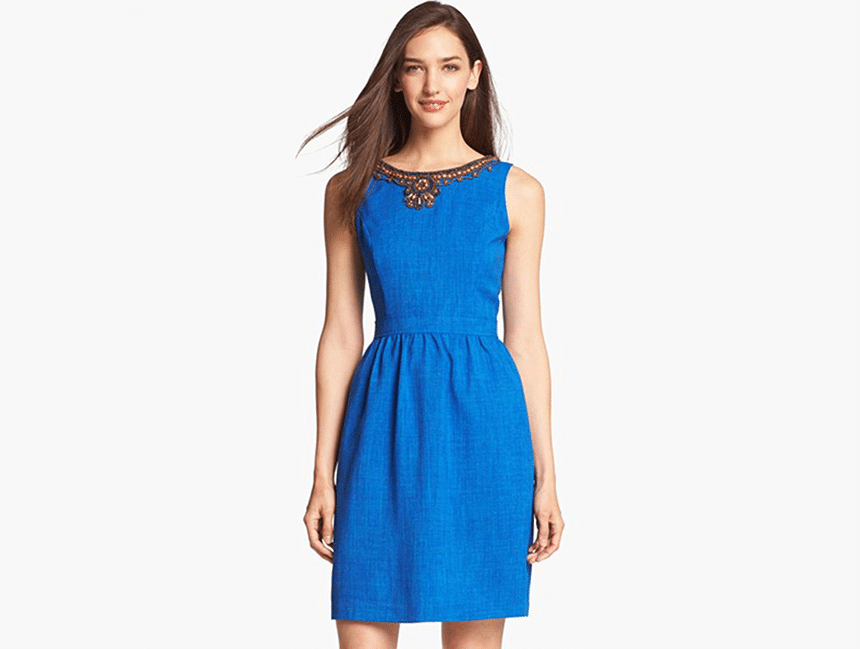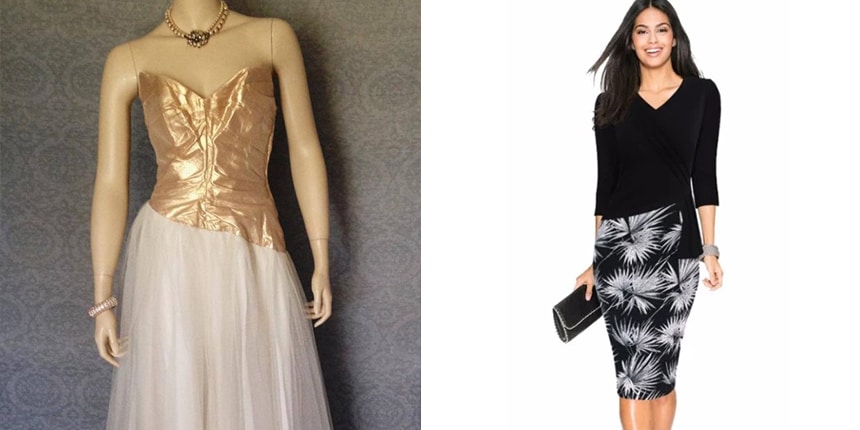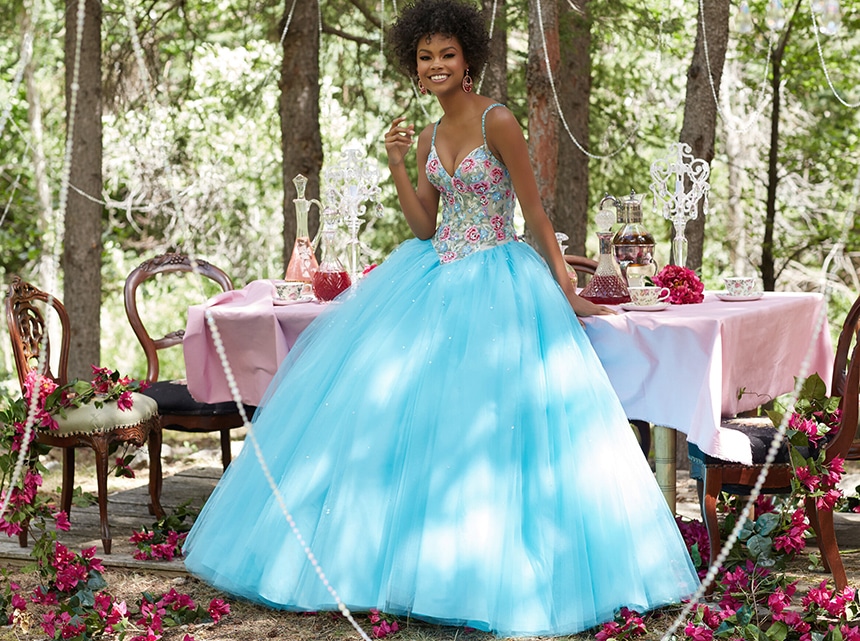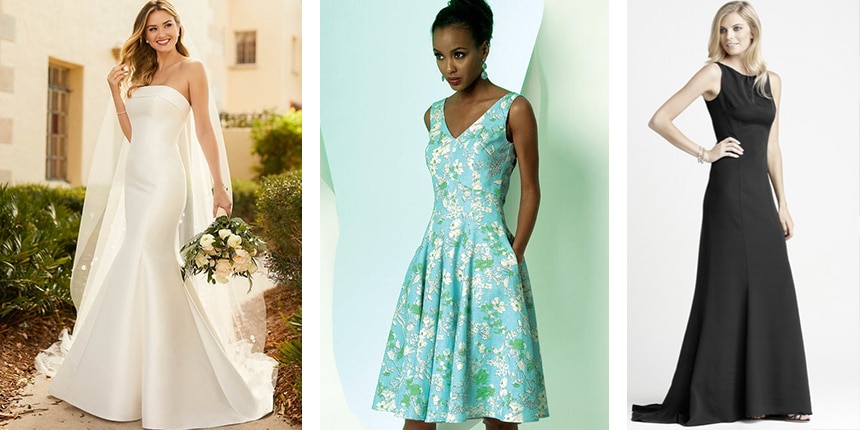

There is no standard body type, and if you want to look your best, you should be able to dress for your body type Trusted Source Body Type Calculator This free body type calculator estimates body type based on provided measurements of bust, waist, and hip size, and their relation to societal conventions. In addition, explore hundreds of other calculators addressing health, fitness, math, finance, and more. www.calculator.net . While many people think this involves wearing specific types of clothing items, in fact, the types of waistlines on garments can have a massive impact on your overall look. Whether you’re dressing for a formal occasion or simply want to feel confident as you socialize, here we’ll explore waist types to help you learn which are best suited to your body type.
For the purposes of comparing the different waist types, we will be looking at the types of dress waistlines. While some of these waistlines can apply to skirts, trousers and even tops, the best way to illustrate them is by imagining a dress, where there is no seam between the top and bottom or the garment.

The natural waistline refers to a waistline resting on your natural waist. You’ll find this point by looking at the narrowest part of the torso between your hips and rib cage. This waistline is typically one of the basic settings on the best computerized sewing machine models and it is a great design to show off a small waist.

An asymmetrical waistline is one of the most popular 4 types of waistlines on wedding dress designs, as it can create a slimming effect. An asymmetrical waistline adds interest to the garment. It breaks the rigid symmetry of standard designs, sitting diagonally across the waist, extending down to create a slant. This is a great option for taller, curvier women.

The empire waistline is a popular choice for types of silk fabrics as it creates a flowing shape that helps create flare from a tight fitted bodice. It creates a neoclassical style that has no constriction, so you can feel glamorous and comfortable. The style dates back to 18th Century Europe, so it also has a timeless feel.
Empire waistlines sit above the natural waistline, accentuating the bust. This style is typically accompanied with a scoop neckline or V neck.
If you have a slimmer upper body and are curvier on your hips and bottom, this can be a complementary style, as you will draw attention to your bust and camouflage the wider parts of your body.

The Antebellum waistline is a V shaped waistline that begins at the natural waist and dips for several inches at the front of the bodice. This is a popular waistline in a variety of fabrics including types of cotton fabric, as it can help the body to look longer and slimmer.

The Basque waistline is similar to the Antebellum types of waistlines on dresses. The difference is that while Antebellum waistlines typically drop two inches, Basque waistlines form a deeper V. The style can also be modified to create a softer U shape that can complement most body shapes.
This style of waistline was originally part of a skirt that was worn with a separate bodice or jacket, but modern Basque waistline designs incorporate the two pieces into one garment.

The Blouson is a gathered type of waistline with loose folds of a bodice gathered into a balloon style skirt. The waistline can gather at the natural waistline or lower. This style of waistline works well with types of lace fabrics, but it can also work with other fabrics.

Dropped waistlines are reminiscent of 1920’s styles of dresses. The waistline sits well below the natural waistline sitting across the hips to create an illusion of having a longer torso. This waistline looks great on tall figures that have a slender profile and narrow hips. However, it can create a shapeless look, so it should be worn with care if you have a heavier lower half or larger bust as it may end up looking sack like.

The cinched waistline is tapered, so the torso mid section appears very narrow. This is usually made with a wide sash or belt, which obscures the gathering to create a more sleek look. This type of waistline is usually used with pleated types of dresses, so the cinching of the waistline has a nice flow.
It is a great option to create an hourglass body shape, which is one of the classic types of waistlines on dresses.

The inverted V or U waistline is the opposite of the Antebellum waistline. It starts at a higher point above the natural waist in the center of the body, dipping down on either side of your bodice.

As the name suggests, the raised waistline is approximately an inch above the natural waistline. This can help to create the appearance of a slimmer torso, drawing the eye to the narrowest part of the body.

Finally, the princess waist is actually a lack of a structured waistline. This is one of the types of waistlines that creates a stunning look with the absence of a horizontal waistline.
The line features long seams starting under the shoulder and curving over the bust and down the body to create an A line look. Since the panels run down the body, this style does not need a conventional waistline, but it does create a fitted look that can complement those who feel very body confident.
Dresses and garments are available in myriad styles and designs. Whether you’re shopping for a wedding dress or simply want to look your best at a party or gathering, choosing the right waistline can ensure that you feel confident. By familiarizing yourself with the types of waistlines, you can determine which waistline styles are best suited to your body type.
Once you know which types of waistlines suit you, you can narrow down your dress options and find the perfect garment for any occasion.